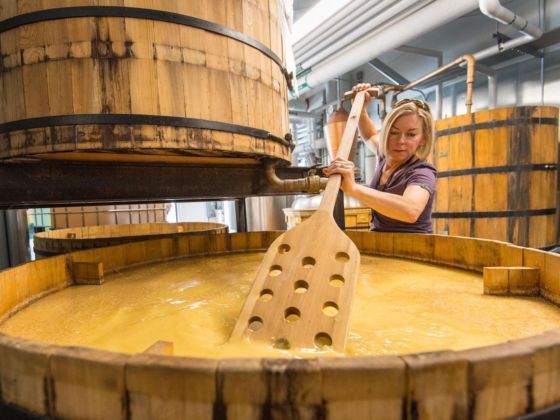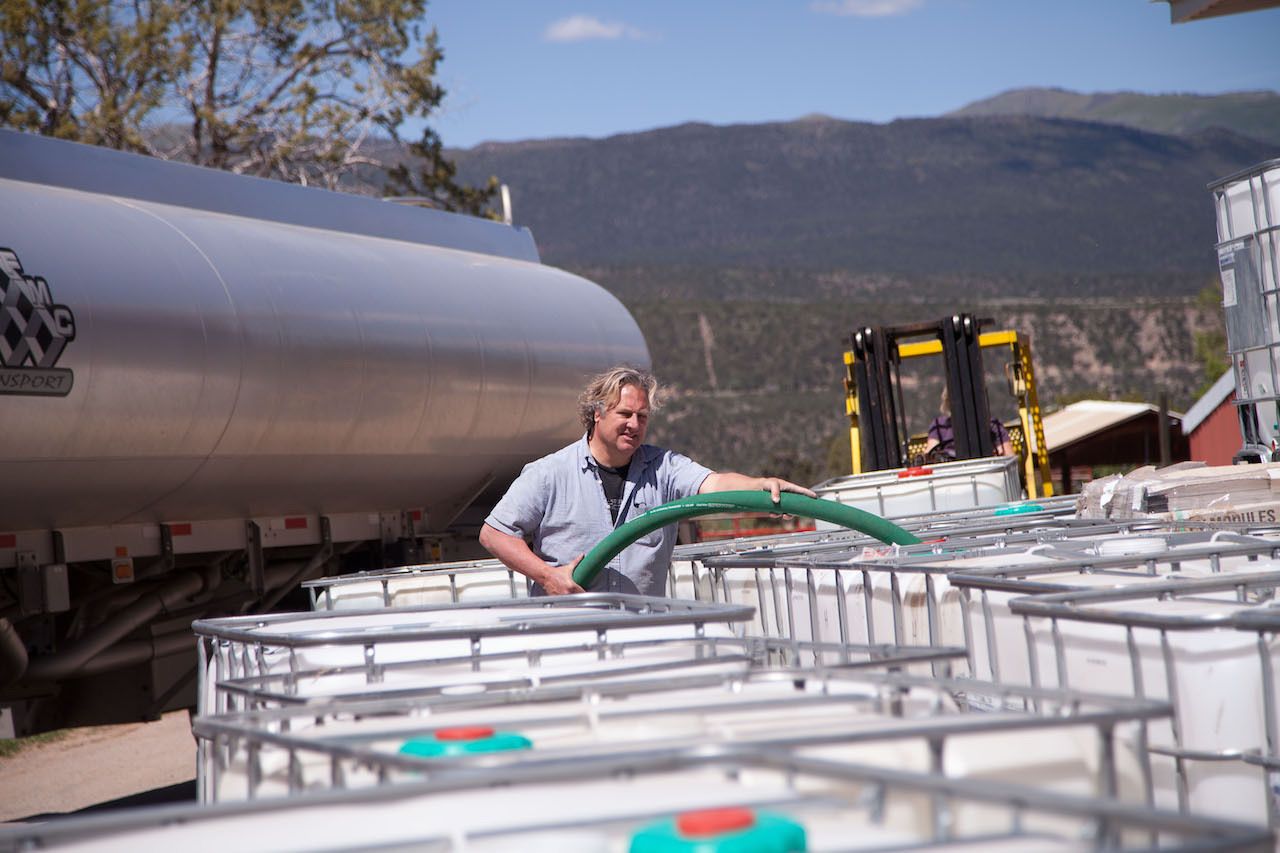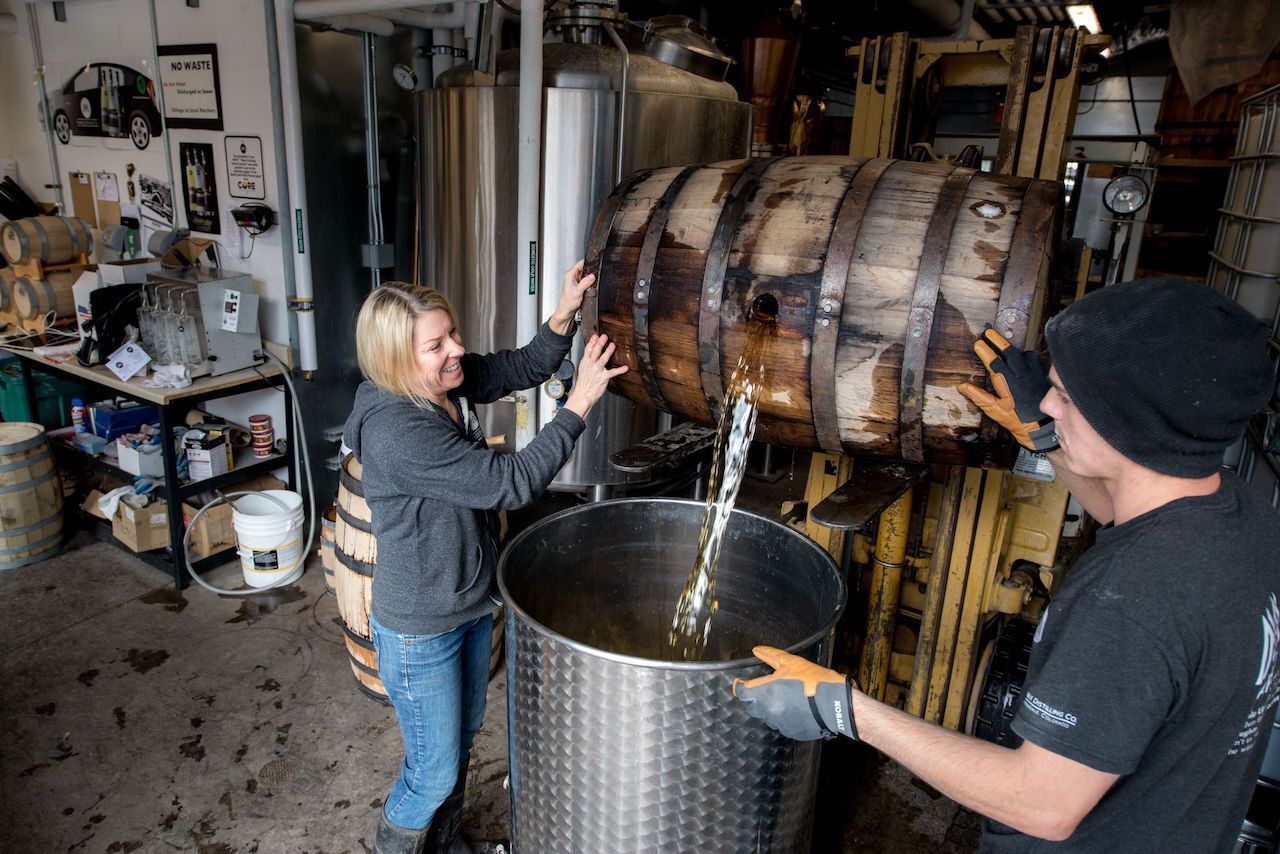Sustainability is all the rage in the craft world. In the realms of craft spirits, in particular, there are common sustainability practices that distillers worldwide boast about — using recycled barrels and existing lightweight glass bottles as opposed to custom-produced bottles, for example. Distillery owners can power their distilleries on renewable energy and encourage sipping from the glass instead of through a plastic straw.


Distilleries Are Helping You Drink More Sustainably. Here's How.
But from the consumer’s standpoint, how does one tell if what they’re buying is actually sustainably produced or if it’s been “greenwashed,” which is when the environmental marketing is louder than the environmental practices?
“I personally don’t mind greenwashing,” says Carey Shanks, the co-owner of Marble Distilling Company and its on-site lodge, The Distillery Inn, in Carbondale, Colorado. “But I say that almost 30 years into trying to figure out a way to get sustainability to be at the forefront of business development.”
Shank adds that he takes “that position because even if they’re greenwashing, they’re creating conscious awareness of an issue that’s significant.”
Marble has true sustainability bonafides and isn’t afraid to show customers exactly how it crafts spirits in a sustainable manner. The brand’s motto is “Drink Sustainably,” and its website touts that Marble is a “zero waste distillery,” a label that has undoubtedly caught the eye of many eco-conscious outdoor travelers passing by Carbondale en route to Aspen (this writer included).
Marble isn’t just blowing smoke. Its Water Energy Thermal System, known as WETS, captures the hot water from the still and uses it to provide, among other things, heat for the building. Instead of using charcoal to filter its vodka, the distillery uses crushed 99.5 percent calcite Yule marble taken from the quarry in nearby Marble, Colorado (hence the name). This keeps it all-natural and, for the history buff, means the vodka passed through a part of the quarry from which the Lincoln Memorial and the Tomb of the Unknown Soldier were sourced.
When they decided to open a distillery, Shanks and his partner, lead distiller Connie Baker, set out to find a local farm to distribute their spent mash to. Their products, which include vodkas, whiskeys, and aperitifs, are made from local grains, and the desire was to create a circular system through the production process.
“We knew we didn’t want to flush the spent mash down the toilet because it was going to hurt everything downriver from us,” Shanks says. “So we went to multiple ranchers that had cattle, chicken, hogs. The one we went with is selling beef for a living. Not only did they just take the spent mash from a 500-gallon strip still, but it’s got water, it’s got a much higher value of protein. It’s also improving their product and their marketing ability.”
Customers can sample their product at the distillery tasting room in Carbondale and the satellite location in downtown Aspen.

Photo: Marble Distilling Co
Loud hyper-greenness isn’t confined to the US mainland, either. California-based, Caribbean-produced Batiste Rhum, a self-styled “eco-positive” rum brand, has built its product on the “grain” part of the “grain to glass” mantra (or, in this case, sugarcane to glass). In particular, who grows it and how.
A major mark of sustainable distilling, according to both Marble Distilling and Batiste Rhum, is to produce grains as close to the natural grassland model as possible. This is done by avoiding repeated tilling of the soil, as well as not spraying herbicides and pesticides — two practices that are nearly impossible on large-scale agricultural farms.
“In any kind of work that anybody does, it comes to, how good is your base material? How well is it handled?” says Tristan Mermin, the brand’s owner. “Distillation is like a mill. The filtration and the proofing are more like the sanding and the planing before you turn it into a piece of material to work with.”
Rum producers, Mermin points out, have an advantage here due to the ease of sugarcane growth.
“The unique advantage we have is that the fermentation operation and distillation sits in the middle of an island that grows sugarcane,” Mermin says. The operation runs carbon negative, meaning it actually offsets more emissions than it produces through renewable energy use. Incorporating a permaculture practice of regenerative agriculture, the brand’s sugarcane is sourced from farms directly around the distillery itself.
Corn and wheat can make a sustainable base for spirits, as well, if grown correctly.
“Grasslands, if handled correctly, are wonderful carbon sinks and can really have a net-positive effect on the environment. However, with corn and wheat, you basically break the cycle with the tilling. Anybody who is doing cover crop and tilling for planting is breaking the natural cycle.”
Sustainability for corn-based spirits is easier in places like Iowa and Indiana, which both grow large amounts of the crop, Mermin adds. Distilleries that either grow their own or source from nearby are eliminating not only the commute of their materials but are keeping the herbicides and pesticides sprayed on big-ag farms out of their product and, ultimately, out of the surrounding waterways and ecosystem. Industrial agriculture becomes unnecessary, and as a result, “the yield is much, much finer,” Mermin says.
When it comes to sustainable distilling, Mermin says, it’s “agriculture first, it’s fermentation second, it’s distillation third, and it’s proofing, filtering, and packaging fourth. If you have crap agriculture, but really good fermentation, you’re still going to have a product that’s questionable.”

Photo: Marble Distilling Co
As a buyer, thinking local is a great way to start, according to Cobey Williamson, founder of the app MicroFinder and the publication MicroShiner. Williamson has dedicated much of his life to helping consumers locate and learn about craft culture.
“There is not a lot that a person can do to identify good actors simply from a label or a brand’s marketing materials,” Williamson says. “So much of this is ‘marketing speak.’ That is why we always recommend that you buy as locally as possible: directly from the distillery itself, so that you can know them personally and ask these questions and can trust that you are buying the product from the company that shares your values.”
That’s not always possible, which is where the goals for the MicroFinder app come in. “We are working to get to a place where you can scan a bottle label with your phone and know right then if it is a sustainably produced product,” Williamson says.
At the end of the day, moving the industry towards more sustainable practices falls on both consumers and producers. When you’re shopping for a bottle of booze to enjoy after work, the best way to know you’re supporting a sustainable brand is to check how collectively the product is sourced.
“[Being] sustainable means to limit your consumption to the level of what the environment can sustain, to balance your inputs with your outputs,” Williamson says. “People have to change their mindset about what matters.”